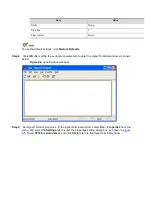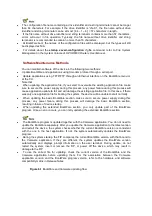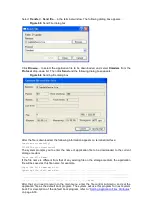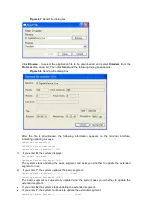
To enter the extended BootWare menu, press
Ctrl
+
B
as prompted within three seconds.
Otherwise, the system will read and decompress the application.
If you want to enter the extended BootWare menu after the system starts decompression, you
need to restart the router.
When booted with both Slot 0 and Slot 1 installed with two RPE-X1s, the system uses the RPE-
X1 in Slot 0 to start applications by default.
When booted with both Slot 1 and Slot 2 installed with two RSE-X1s, the system uses the RSE-
X1 in Slot 1 to start applications by default.
The system has three types of application files, namely, main application file, backup
application file, and secure application file. For detailed information about these files and which
file is selected for the system startup, refer to Chapter 6 "Maintaining Software."
For the convenience of reading and understanding, the extended BootWare menu is referred to
as the main BootWare menu unless otherwise specified.
Starting to get the main application file--cfa0:/main.bin!..................
......................................................
The main application file is self-decompressing
..........................................................................
..........................................................................
.......
.......
Done!
System is starting.....
Starting application at 0x00010000 ...
Mainboard 0 is master.
User interface con0 is available.
Press ENTER to get started.
Press
Enter
and the screen will display:
<HP>
This prompt indicates that the router has entered user view and is ready to configure.
Configuration Fundamentals
In general, the configuration steps are as follows:
Step1
Before configuring the router, you should summarize the networking requirements, including
the networking objective, role of the router in the network, division of subnets, WAN type and
transmission medium, network security policy and network reliability.
Step2
Based on the above requirements, draw a clear, complete network diagram.
Step3
Configure the WAN interface of the router. Configure the operating parameters (for example,
the operating mode, baud rate and synchronous clock in case of a serial interface) of the
interface according to the transmission medium of the WAN.
Step4
Configure the IP addresses of all the interfaces on the router according to the division of the
subnets.
Step5
Configure routes. If it is necessary to enable a dynamic routing protocol, you need to configure
related operating parameters of the protocol.
Step6
Perform special security configuration for the router if necessary.
Step7
Perform reliability configuration for the router if necessary.
For the configuration details of the protocols or functions of the router, refer to
HP SR6600
Routers User Manual
.






























